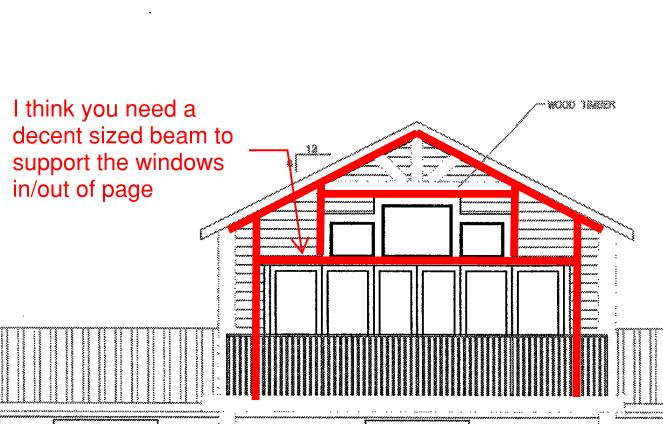E720
Structural
- Feb 20, 2018
- 71
I have attached an elevation of a job I am working on. There is a covered deck on the back and the rear wall has a large opening for sliding glass doors with a few transom windows above it. The roof is all stick framed so there is a point load above those openings from the ridge beam. A header placed directly above the transom windows wouldn't have room to span all the way across the opening for the doors. Usually in this situation I would put a header above the transom windows that post down onto another header placed between the transom windows and the doors, but there just isn't enough room. I feel like here are my options:
[ol 1]
[li]Use what I would call a steel bent or a "cranked beam" where I have steel beams at the slope of the roof and meeting in the middle, designed to carry a moment in the middle, coming down onto steel columns.[/li]
[li] Run the ridge all the way from the timber truss through the wall in question all the way to the other side of the house. I ran the numbers and it would have to be an HSS 14x4x3/8. [/li]
[li] Any other options? [/li]
[/ol]
Thanks,
E720
[ol 1]
[li]Use what I would call a steel bent or a "cranked beam" where I have steel beams at the slope of the roof and meeting in the middle, designed to carry a moment in the middle, coming down onto steel columns.[/li]
[li] Run the ridge all the way from the timber truss through the wall in question all the way to the other side of the house. I ran the numbers and it would have to be an HSS 14x4x3/8. [/li]
[li] Any other options? [/li]
[/ol]
Thanks,
E720

